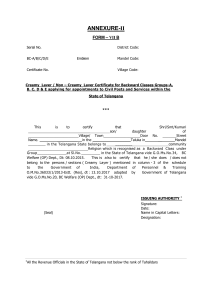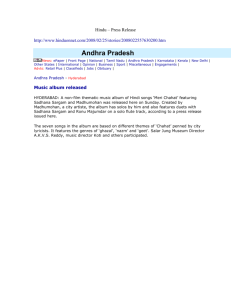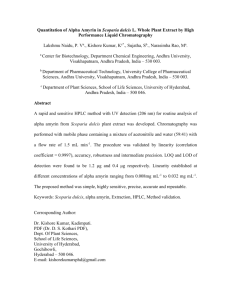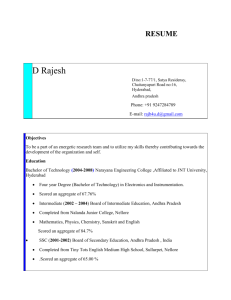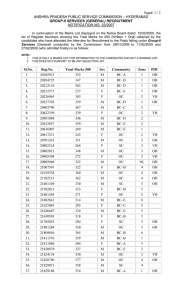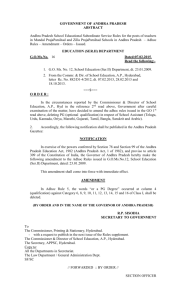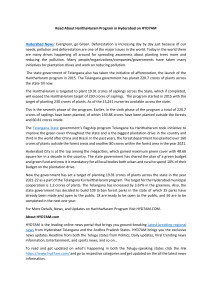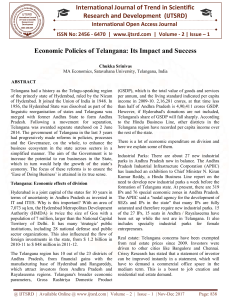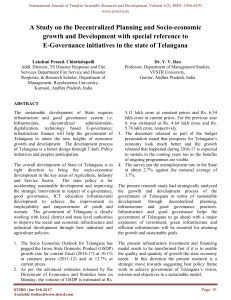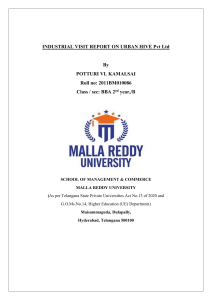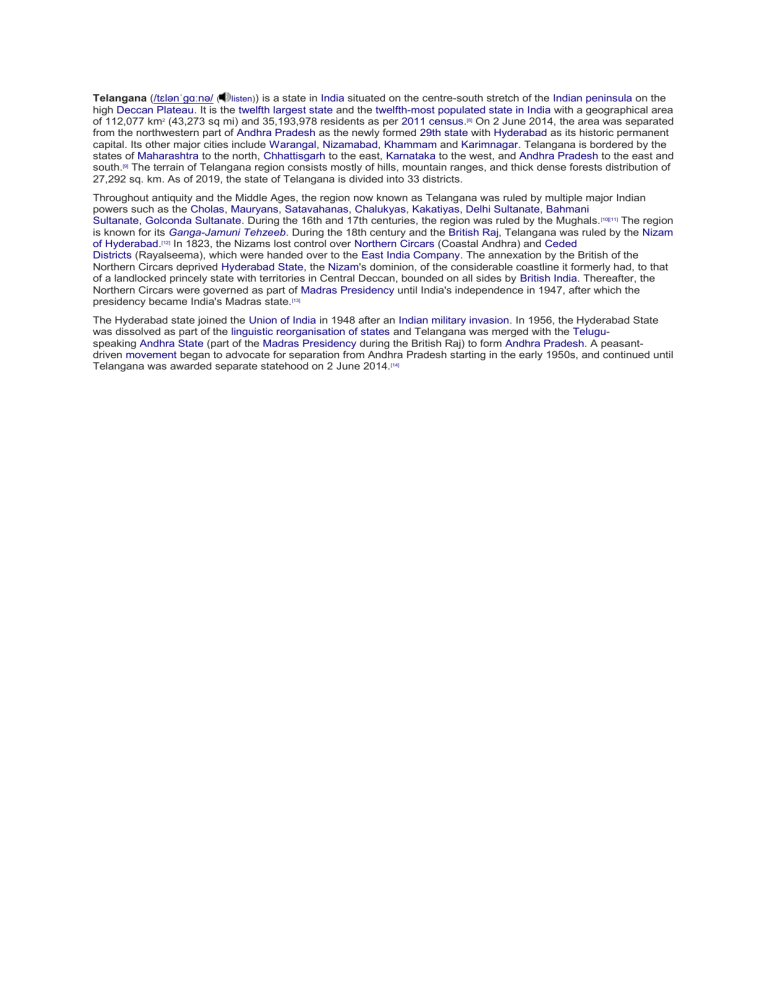
Telangana (/tɛlənˈɡɑːnə/ ( listen)) is a state in India situated on the centre-south stretch of the Indian peninsula on the high Deccan Plateau. It is the twelfth largest state and the twelfth-most populated state in India with a geographical area of 112,077 km2 (43,273 sq mi) and 35,193,978 residents as per 2011 census.[8] On 2 June 2014, the area was separated from the northwestern part of Andhra Pradesh as the newly formed 29th state with Hyderabad as its historic permanent capital. Its other major cities include Warangal, Nizamabad, Khammam and Karimnagar. Telangana is bordered by the states of Maharashtra to the north, Chhattisgarh to the east, Karnataka to the west, and Andhra Pradesh to the east and south.[9] The terrain of Telangana region consists mostly of hills, mountain ranges, and thick dense forests distribution of 27,292 sq. km. As of 2019, the state of Telangana is divided into 33 districts. Throughout antiquity and the Middle Ages, the region now known as Telangana was ruled by multiple major Indian powers such as the Cholas, Mauryans, Satavahanas, Chalukyas, Kakatiyas, Delhi Sultanate, Bahmani Sultanate, Golconda Sultanate. During the 16th and 17th centuries, the region was ruled by the Mughals. [10][11] The region is known for its Ganga-Jamuni Tehzeeb. During the 18th century and the British Raj, Telangana was ruled by the Nizam of Hyderabad.[12] In 1823, the Nizams lost control over Northern Circars (Coastal Andhra) and Ceded Districts (Rayalseema), which were handed over to the East India Company. The annexation by the British of the Northern Circars deprived Hyderabad State, the Nizam's dominion, of the considerable coastline it formerly had, to that of a landlocked princely state with territories in Central Deccan, bounded on all sides by British India. Thereafter, the Northern Circars were governed as part of Madras Presidency until India's independence in 1947, after which the presidency became India's Madras state.[13] The Hyderabad state joined the Union of India in 1948 after an Indian military invasion. In 1956, the Hyderabad State was dissolved as part of the linguistic reorganisation of states and Telangana was merged with the Teluguspeaking Andhra State (part of the Madras Presidency during the British Raj) to form Andhra Pradesh. A peasantdriven movement began to advocate for separation from Andhra Pradesh starting in the early 1950s, and continued until Telangana was awarded separate statehood on 2 June 2014.[14]
